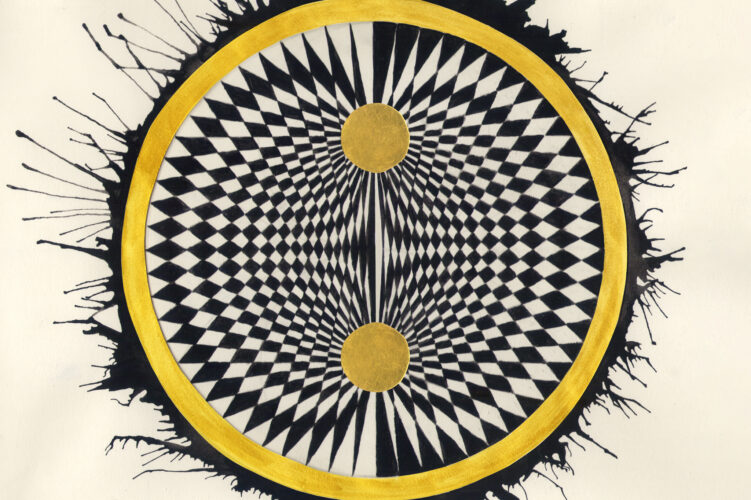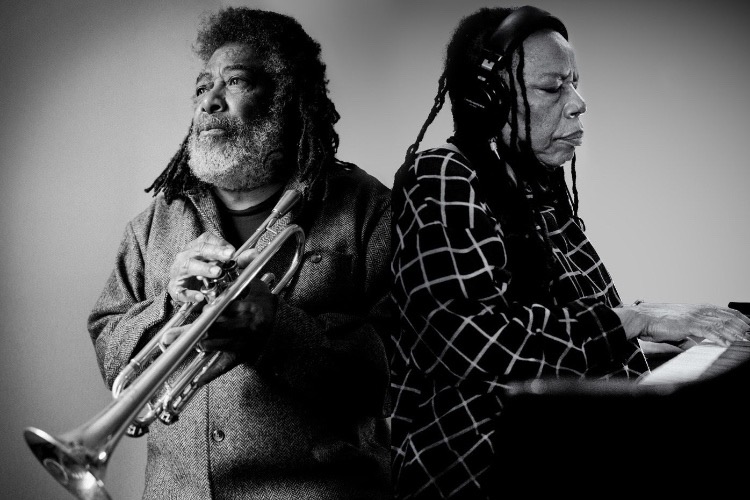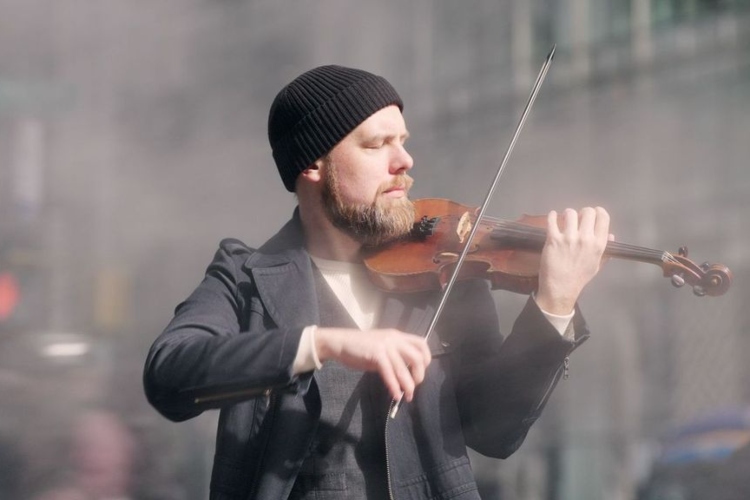Out Into the World: A Conversation with Stuart Bogie (Part One)
|
Getting your Trinity Audio player ready...
|
The big band concept has existed for well over a century. Throughout that time, dance has always been an essential part of the music. In the 1910s, artists used the format to support polka and waltzes. Thirty years later, the big band was the essence of the rage of swing music. While artists have continued to compose for the large ensemble, to some extent, the association with dance has waned, partly attributable to the rise of more commercially popular styles – including pop, funk, R&B, and EDM – that also emphasize a dance component. In many ways, Stuart Bogie’s album The Prophets in the City (Royal Potato Family, 2022) harkens back to an older history while carving its own path forward.
As Bogie notes, while The Prophets in the City is not dance music, it still has an undeniable dance component. It is difficult to not find yourself grooving while listening to the recording. Additionally, The Bogie Band featuring Joe Russo exudes the power of the big band without relying on any cliches inherent in the format. The ability to breathe new life into the large ensemble comes primarily from Bogie’s unique history as a musician. While well-versed in its tradition, his experience comes less from the jazz lineage than other areas of the sonic world. The saxophonist’s credits – including recordings by Arcade Fire, Iron & Wine, Curtis Harding, Run the Jewels, Butch Morris, Taylor Swift, Medeski Martin and Wood, Angélique Kidjo, Kronos Quartet, and a collaboration between David Byrne and St. Vincent – show a career unfettered by genre. These influences also provide an expansive palette for the band.
While seemingly formed out of necessity and Bogie’s reliance on the generosity of close friends, the ten-piece ensemble’s choice in members is equally inspired. Drummer Joe Russo – a key component to the album – has straddled jazz and jam music for over a decade. Saxophonist Colin Stetson is renowned for pushing the edges of improvised music. Trumpeter Michael Leonhart (whose The Normyn Suites features many of the same artists, including Bogie) is himself adroit at reconceptualizing the large ensemble. Other members bring experiences from their time with The Dap-Kings, Red Barat, and the Budos Band.
The result is a vibrant recording that represents a blurring of cultures and ideas in a way possible only in New York. While you can sense the lines of thought from the past, it forges a unique way forward. We sat down with Bogie to discuss how the album came together, his compositional approach, and the Bogie Band’s acclaimed performance at the 2021 Newport Jazz Festival.
PostGenre: How did The Prophets in the City come together?
Stuart Bogie: Well, when I started working on the album, I had just finished a long series of tours and released my third full-length album with a project called Superhuman Happiness. I wanted to go back into some musically fruitful areas that I had left behind for a little while to see if performing that type of music still excited me.
PG: Excitement is a good word to describe the album. There is a lot of energy throughout the record. Did you find it hard to create that type of energy in a studio compared to in front of a live audience?
SB: Honestly, I think that sometimes the energy of a live audience can be too much for a recording. It can sound too frantic. In the moment, everyone is feeling the energy. But it doesn’t always carry over well to a recording. It reminds me of the relationship between theater and film or television. The interactions between actors on a film set seem relatively chill compared to when they work on a theater production.
The absence of an audience allows you to fly the plane without distractions, so to speak. I think being able to focus in that way is beneficial, especially for music that has a relationship to dance. This album is not necessarily dance music, but if it does deal with rhythms that have their origins in dance and, in a project like that, you want to have a certain level of steadiness and not be too frantic. The studio rounds the experience out by giving you a perfect balance of focus and energy. I found the studio to be the perfect place to make music for this album.
PG: The album credits indicate that some of the songs were recorded at different band members’ homes. Was that a result of the pandemic?
SB: We recorded some of the album before the pandemic and even did one concert with the group live. But most of the work on the album took place during the pandemic. When the shutdowns hit, I finished the album by having friends record at home and send me their music. People sent me all kinds of things, even recordings of the 7 pm cheering we were all doing – especially in New York and the UK- for first responders. I took them and fused them into the album. I did much of the recording with an on-the-street type of mindset.
PG: Was it more difficult to piece the album together that way compared to if you had used a more traditional recording approach?
SB: No, no. I’ve been making records that way since ‘98 or ‘99. I always loved Tom Waits and his records came together that way. I also love hip-hop records from the 90s, which often brought environmental sounds or narratives between songs. I thought it would be great to follow the same approach with instrumental music because it gives so much freedom to the music.
PG: While the album was not recorded before a live audience, it seems to have resonated well in live performances. For instance, the Bogie Band received impressive reviews of its performance at the Newport Jazz Festival last summer.
SB: Yeah.
PG: A large portion of our site is dedicated to the history and continued story of the Newport Jazz Festival. As someone leading a large group, what was it like playing an event with such a rich history of large ensembles, including Duke Ellington’s legendary 1956 performance?
SB: The idea of playing at such an important event was, honestly, very intimidating at first. I played Newport once before, but that was over a decade ago. Newport is a great place to be. I kept just realizing how lucky I was to be there. The other musicians were wonderful, so relaxed and giving. It’s just such a lovely place. There’s even this woman who makes signs by hand for the event.

PG: Yeah, Nan Parati. She’s great. She also does the signs for the New Orleans Jazz and Heritage Festival and several other festivals. You can even commission her to do one for you.
SB: Oh man, she was so cool. We got to meet her, and she was wonderful.
PG: You mentioned that you performed at Newport before. Was that with Antibalas?
SB: Yeah, it was with Antibalas years ago.
PG: There is an Afrobeat influence on The Prophets in the City Do you think your experience with Antibalas shaped the music on this album?
SB: Absolutely. The rhythmic music of Fela [Kuti]’s music is one of my favorite things in all of music. Fela had a way of distilling a thrilling excitement between two or three rhythms. I’ve been trying to digest as much of his musical ideas as I can while I am on the planet. When I write my own music, it certainly comes out. Some of my songs have direct references to Fela’s music, and others are more indirect. With Antibalas, I was able to study Fela’s music for about twelve years. Before then, I had searched for that sound my entire musical life, about sixteen or seventeen years. Many of my peers criticized me because I didn’t play traditional jazz. I didn’t play the blues. I couldn’t play classical music particularly well, despite having tried. It wasn’t until I found Fela’s music that I found a sense of belonging in music.
PG: As you mentioned, you are not coming from the jazz background as much as the stereotypical saxophonist. Your recording background is diverse. Do you feel your broader background gives you a special perspective when it comes to jazz-based performances?
SB: I do. Part of what makes my music different is also that my background is less tied to music schools. The first several people I worked with did not go to music school. They either didn’t go to college at all or, if they did, studied something other than music. Win Butler of Arcade Fire studied photography and creative writing. Kyp Malone from TV on the Radio didn’t go to college. Sam Beam of Iron and Wine was a film professor before he began touring. And Martín Perna, who founded Antibalas, has a degree in education. None of them were music majors coming out of the conservatory with all kinds of chord progressions and methods drilled into their heads. While I do have a music degree, so much of your learning is on the stage, especially when you are starting out. And I learned a lot from these people on ways of approaching music that aren’t taught in the conservatory or university jazz programs.
Also, in music school, no one ever told me to follow the music I was attracted to. That idea seems like the most basic thing in the world. And, yet, they were often trying to push you into one category or another instead of nurturing you to let your interests guide you. The truth is that playing music is meaningless unless you’re moving towards what you love. I was always listening to Neil Young or the Art Ensemble of Chicago, people that were trying to do something different. Of course, I would want my music to be different as well.
PG: Speaking of the Art Ensemble, you are originally from Evanston, Illinois, which is in the Chicago area.
SB: Right.
PG: Do you feel The Prophets in the City draws from Chicago’s rich musical history?
SB: It’s a hard thing to claim and talk about, but I’ve been told by people I respect and appreciate that they hear the Chicago sound in my music. I feel you can sense the influence at certain points on the album. For example, on the fourth movement of “The Prophets in the City,” as the music goes back into the head and all of the horns are playing a melody together, it is a textural shift that I feel has Chicago in it somehow. As far as people generally saying they sense a Chicago sound in my music, I’m not entirely sure what they mean by it. But if they mean I’m striving for my own direction, as Roscoe Mitchell has done throughout his career, it could be the best compliment I’ve ever received.
Our conversation continues here.
The Bogie Band featuring Joe Russo’s The Prophets in the City is now available on Royal Potato Family. It can be purchased on Bandcamp or in our Amazon Affiliate Store.
More information on Stuart Bogie can be found on his website.




4 thoughts on “Out Into the World: A Conversation with Stuart Bogie (Part One)”